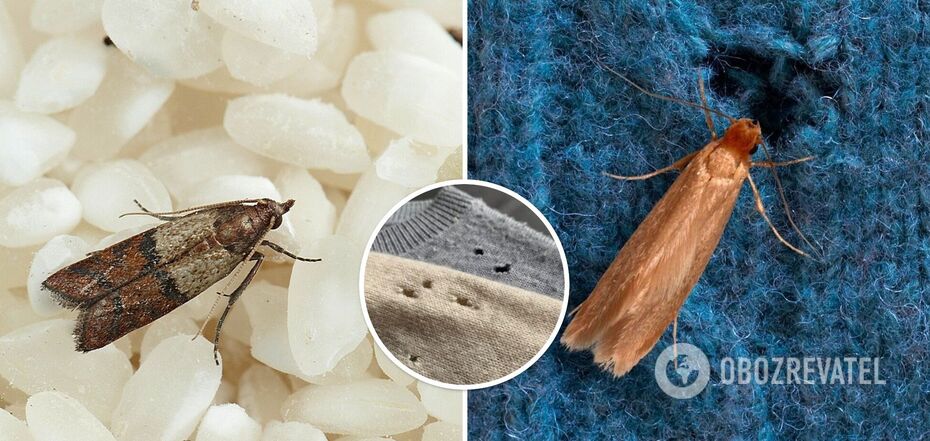Life
How to get rid of moths at home: quick methods with long-lasting effects
Moths feed on substances found in wool and fur. These butterflies avoid bright daylight and artificial lighting, so they tend to settle in dressers, pantries, and cabinets.
The life cycle of a moth is relatively short, ranging from several days to a few weeks. However, within this time frame, the insect can lay a substantial number of eggs. Good Housekeeping magazine has outlined quick and long-lasting methods to eliminate moths.
Why moths are harmful
First, you need to identify the type of moth. There are dress moths, typically found in wardrobes, attracted to wool and fur products, consuming threads from the inside; food moths, which can infest cereals, dried fruits, nuts, and other groceries; and furniture moths, known for gnawing on the hair padding of upholstered furniture. In the kitchen, moths may also be present in rice, crackers, cereals, and other long-term storage items.
Experts from the Housekeeping Institute's home care laboratory, as well as pest control specialists, have provided their best tips and tricks for dealing with moths.
Insects find various ways to enter your home, including flying in through an open door or window, hiding in fabric fibers (including used clothing), or squeezing through small cracks in the facade.
Carolyn Forte, executive director of the Good Housekeeping Institute's home care lab, pointed out that even unseen stains, such as sweat or clear drinks, can oxidize and attract insects.
In addition to creating holes, moths leave behind cobwebs, fibers, and excrement that resemble small grains of sand.
How to control insects
Dispose of potentially infested clothes and food. If the clothes are valuable, washing them in hot water with detergent is recommended. Dry cleaning is the best option.
Vacuum everything in the kitchen and closet, including carpets, walls, and baseboards. Use a specialized nozzle to clean all corners. Dispose of the vacuum cleaner bag immediately or empty the dust cup outside and wash it thoroughly, as it may contain eggs. Afterward, meticulously wash the shelves and walls with a mixture of soap and water. Pantry shelves can also be wiped down with a 1:1 mixture of white vinegar and water.
While mothballs were once used to combat moths, experts now consider the chemicals in mothballs hazardous to health.
How to protect clothes from moths
- Seal seasonal clothes in airtight bags or boxes.
- Store clothes in a dry place.
- Wood oils can prevent infestations by harming small larvae, but they won't eliminate existing insects.
How to protect food from moths
- Store food in airtight glass or hard plastic containers.
- Opt for dry storage areas, as insects thrive in moisture.
- Check food from the grocery store before placing it in a drawer or on a shelf.
Aromatic herbs are excellent for repelling moths. Fill a plastic bag with herbs such as lavender, rosemary, cloves, etc., and place it on the shelf with cereals. You can also use essential oils for clothing.
Previously, OBOZREVATEL guided on setting up a moth trap.
Subscribe to OBOZREVATEL's Telegram and Viber channels to keep up with the latest developments.



























